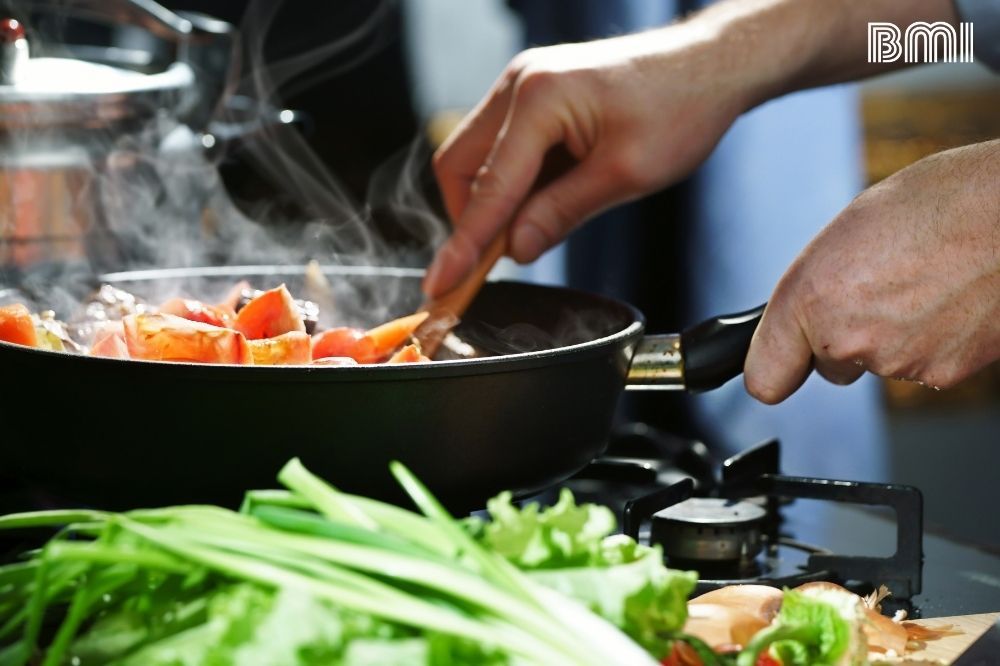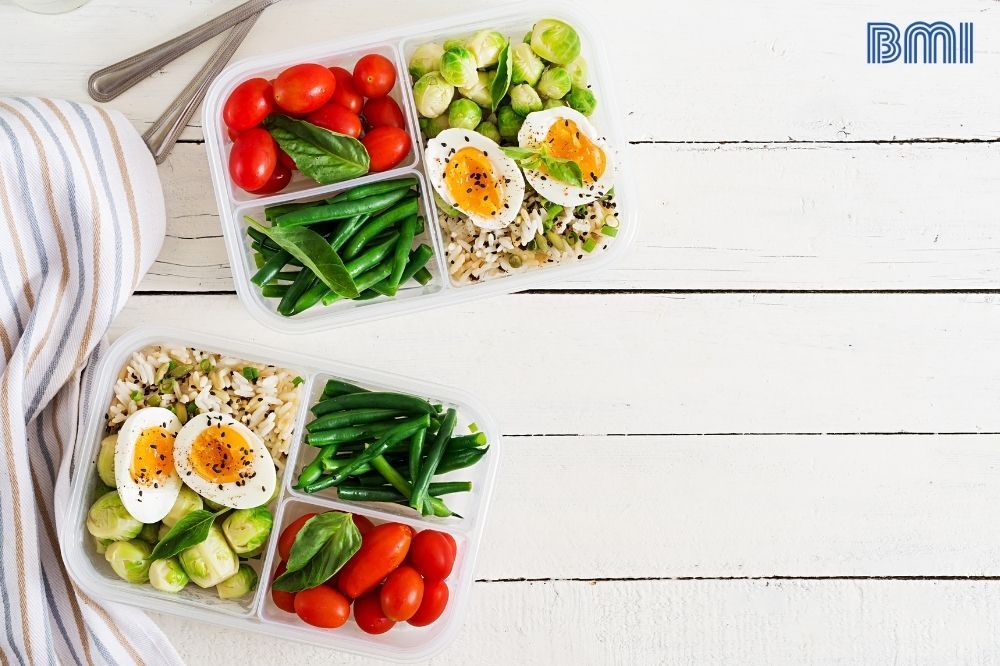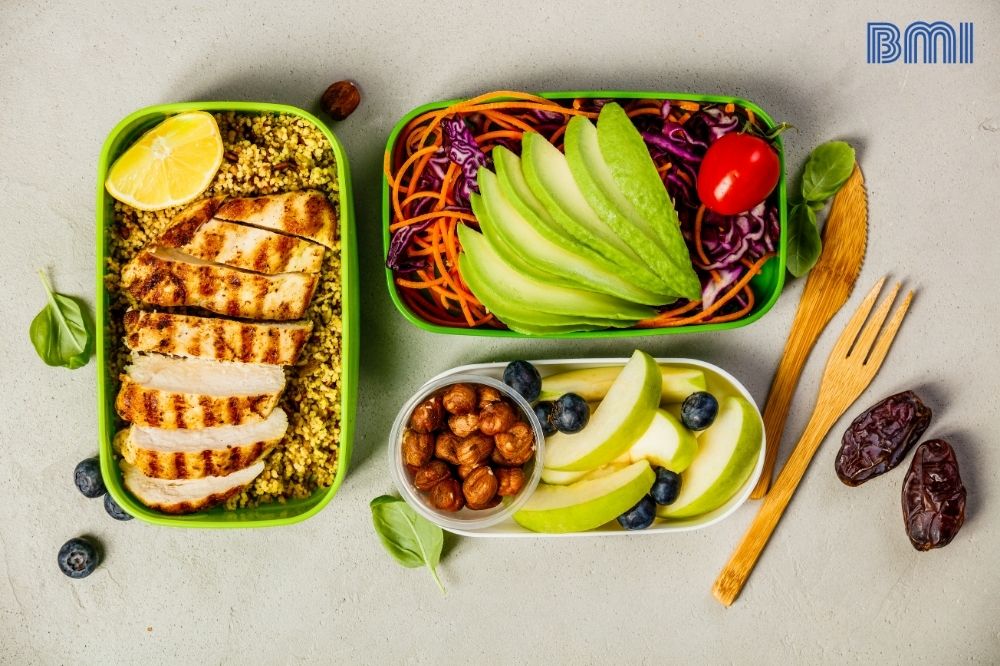Have you heard of batch cooking? With this method you will plan and organize a balanced weekly menu. You will only have to dedicate an afternoon to cooking to have food ready for the whole week and thus enjoy more free time.
Knowing the foods to choose and maintaining minimum handling and preservation precautions will help you make your batch cooking a success.
Many of us don't have time during the week to cook. Hence the importance of having basic ingredients prepared, such as vegetables, legumes or rice, ready to be part of complete and tasty dishes throughout the week.
Batch cooking has great advantages, here we list some of them.
- Your diet will be healthier, especially because you avoid precooked ones and because you will not have to improvise: arrive, warm up and have lunch or dinner.
- You will be able to reduce waste, because you will buy exactly what you need and you can freeze the portions that you are not going to take.
- If you or another family member needs it, you can eat from a tupperware at work or at the study center, because many of the dishes are ready to be eaten.
- You will contribute to environmental sustainability, choosing seasonal foods that are always cheaper and are at their optimum time of consumption.

BMI wants to present you with three basic tips so that batch cooking contributes to your health.
- INCLUDES ALL ESSENTIAL NUTRIENTS
- Proteins A plate of legumes or a piece of tofu about the size of the palm of your hand is usually adequate for most people. In each intake we should consume approximately 20 g of protein.
- Vegetables. They should take up half the plate. It is not a bad idea that we try that, at least once a day, they are raw vegetables, for example, in salad or as vegetable sticks. Also a cold gazpacho type soup serves us in this sense.
- Cereals and tubers. They should not occupy more than a quarter of the plate and should be taken into account when preparing the menu (the appropriate portion may vary depending on whether we exercise more or less). Choose cereals and whole grains, more nutritious. If our habits are sedentary, we can reduce the portion.
- Accessories. Three extra tips to ensure a healthy menu: that the accompanying drink for meals is water, that the dessert be seasonal fruit, and that the fat of choice for cooking and dressing is extra virgin olive oil.
- YOU CAN GO TO HEALTHY PROCESSED
In recent times there is some confusion between ultra processed and processed, and sometimes it can be transmitted that no processed food is healthy. This is a big mistake, since any food with minimal manipulation is processed: from olive oil to whole wheat bread or a simple cut vegetable.
Therefore, there are perfectly healthy processed foods and others that are not. On the other hand, processed ultras should always be avoided: they are basically made from refined flours, added sugar and poor quality fats, such as sweets, precooked products, industrial sauces ...
Among the healthy processed foods that we can have at home to solve a problem, the following stand out:
- Canned cooked legumes: chickpeas, beans, lentils ...
- Canned vegetables: tomato, mushrooms, piquillo peppers, asparagus, palm hearts, corn, artichokes ...
- Nut creams (without added sugar).
- Vegetable drinks or yogurts (without added sugar).
- Ultra frozen vegetables.
- Whole wheat bread or whole grains.
- Dried fruit: raisins, plums ...
- Some packaged gazpachos: check the label that they only have vegetables, olive oil and salt.
- Some broths in brick: check that they only have vegetables and, if anything, olive oil and salt, among the ingredients.

- TAKE MEASURES TO PREPARE YOUR DISHES SAFELY
It is very important to follow minimum food safety and hygiene precautions to ensure that when you go to consume the stored food they are in perfect condition.
- Make sure the storage containers are perfectly clean. Always choose tapers that can be covered perfectly and preferably made of non-porous materials such as glass.
- Once food is prepared, keep it covered and refrigerated at all times until consumption. The temperature in the refrigerator should be below 3ºC.
- If you are going to store something longer than 3-4 days, it may be more appropriate to freeze than just refrigerate.
- Separate raw food from cooked food. Make sure you properly wash the vegetables you are going to eat raw with plenty of water.
- Thaw in the refrigerator, not outside at room temperature, to prevent microorganisms from multiplying.
- Bring soups, broths, and creams back to a boil before consuming. Just heating is not enough. This ensures that we get rid of any pathogens that may have multiplied during storage.
- When reheating other foods, it exceeds 70 ºC throughout the food; food must burn.
- Take extreme precautions if the food is going to be consumed by babies, pregnant women, the elderly or sick people.
Do you dare to try this way of cooking to save time without giving up a healthy diet? The best thing about batch cooking is that there are no strict rules, it is you who adapts your kitchen to your own needs.

















